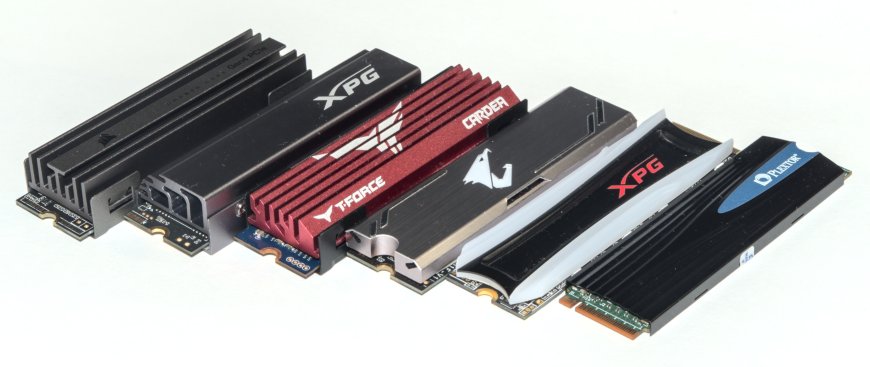The Advent of PCIe 4.0 SSDs
The storage industry is witnessing a significant transition with the adoption of the PCIe 4.0 standard, marking a new era in high-performance storage. This advancement primarily manifests in the form of even faster NVMe SSDs, thanks to PCIe 4.0's ability to double the data rate compared to its predecessor, PCIe 3.0. Where previous generation SSDs peaked at speeds of up to 3500MB/s, the new generation boasts speeds reaching up to 5000MB/s. This article will explore how these enhanced speeds translate to real-world performance by benchmarking several new PCIe 4.0 drives against top-tier PCIe 3.0 SSDs.

PCIe 4.0: A Leap in Performance
Doubling of Data Rates
PCIe 4.0's most significant contribution to SSD technology is its doubled data rate compared to PCIe 3.0. This increase is not just a theoretical improvement but has practical implications for the performance of NVMe SSDs, pushing the boundaries of data transfer speeds and storage efficiency.
Also check New AMD Threadripper Pro CPU breaks cinebench records
Benchmarking New Drives
The real-world impact of these improvements will be assessed by comparing new PCIe 4.0 drives with some of the fastest PCIe 3.0 SSDs available. The focus will be on understanding what the increased throughput means for power users and average consumers alike.
Mainstream Adoption of PCIe 4.0
AMD's X570 Platform
The first mainstream platform to adopt PCIe 4.0 is AMD's X570 platform, launched with the third-gen Ryzen processors. This platform caters to the high-performance premium segment, enabling a suite of forward-looking technologies including PCIe 4.0, M.2 Gen 4 storage, USB 3.2 Gen 2 standard, and in some cases, Wi-Fi 6 and 10 GbE connectivity.
Roundup of New PCIe 4.0 SSDs
Featured Models
In this roundup, the focus will be on the new Corsair MP600, Sabrent Rocket, and Gigabyte Aorus SSDs, all of which are PCIe NVMe 4.0 drives. These models will be compared against two highly acclaimed PCIe 3.0 SSDs: the Samsung 970 Pro and Intel’s Optane SSD 905P.
Previous Gen Comparisons
For a comprehensive understanding, these drives will also be contrasted with several other PCIe 3.0 drives featured in last year's roundup.
Price Comparison: PCIe 4.0 vs. PCIe 3.0 SSDs
Assessing Affordability
A surprising aspect of the new PCIe 4.0 SSDs is their relative affordability compared to the Gen 3 SSD 970 Pro, a prosumer version of the more budget-friendly SSD 970 Evo. The comparison reveals that the price premium between Gen 3 and Gen 4 SSDs is about 30%, which is a crucial factor for consumers balancing performance and cost.
The Outlier: Optane Drive
Intel's Optane SSD 905P stands out in this comparison, primarily due to its unique technology and positioning more in the enterprise sector than consumer markets. Its development status and target audience make it an interesting but atypical example in the PCIe SSD landscape.
Conclusion: The Impact of PCIe 4.0 on SSD Performance and Pricing
The introduction of PCIe 4.0 SSDs marks a significant milestone in storage technology, offering substantial improvements in data transfer speeds and overall performance. This comparison study reveals not only the technical advancements of PCIe 4.0 over PCIe 3.0 but also the evolving landscape of SSD pricing. With a moderate price premium, PCIe 4.0 SSDs present a compelling option for users seeking cutting-edge performance. As the technology continues to mature and become more mainstream, it is poised to redefine expectations and standards in the realm of high-performance storage solutions.


































